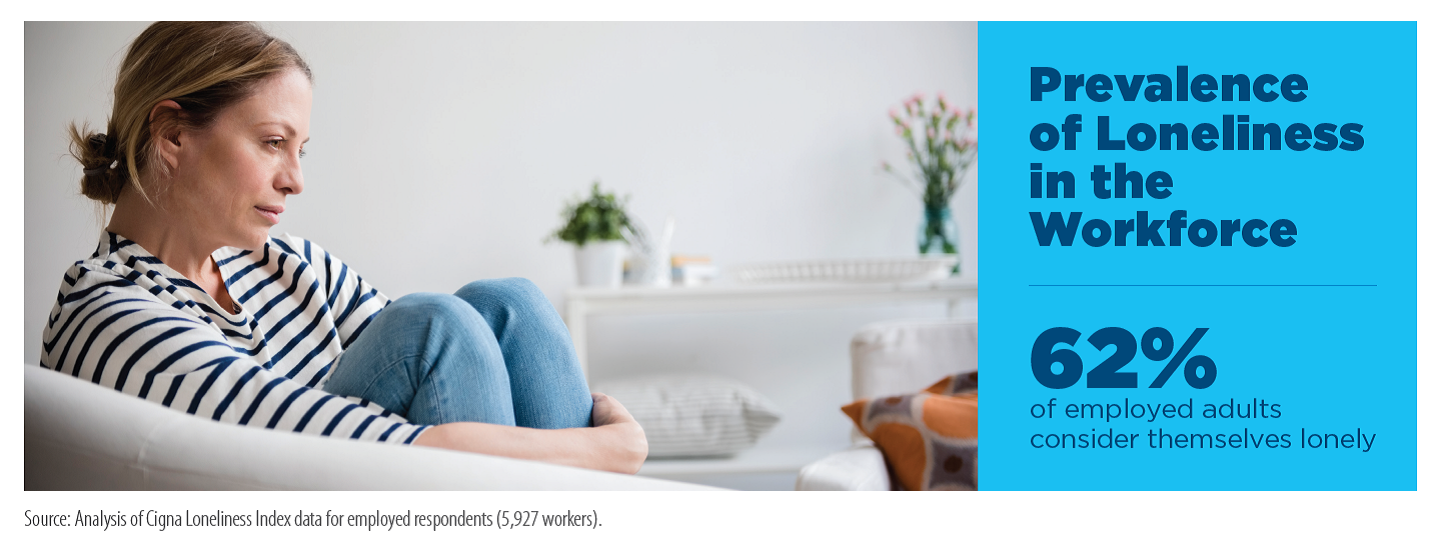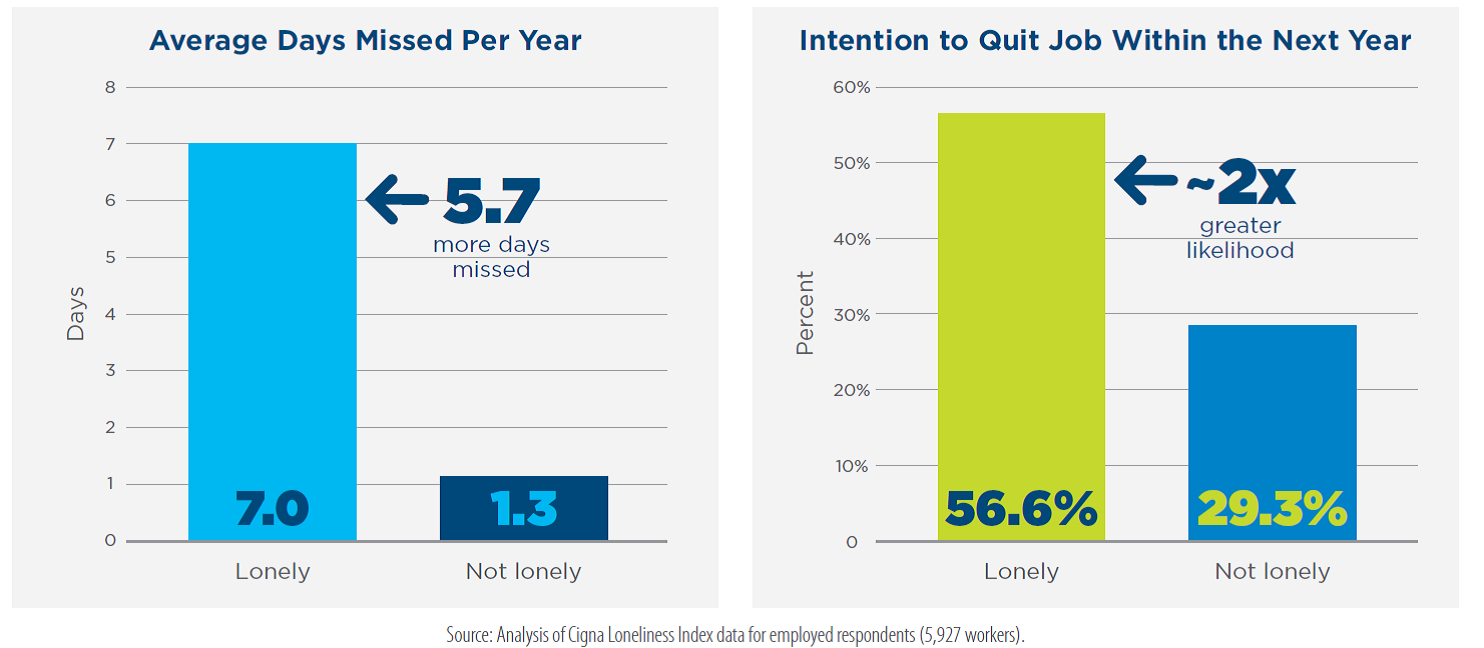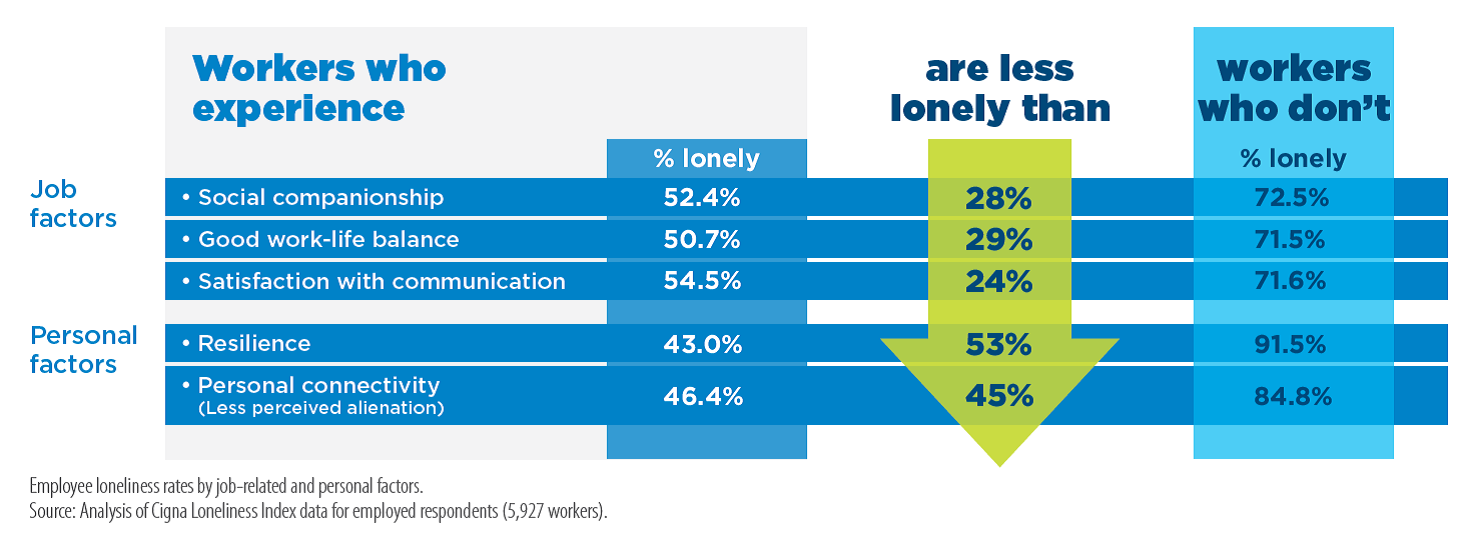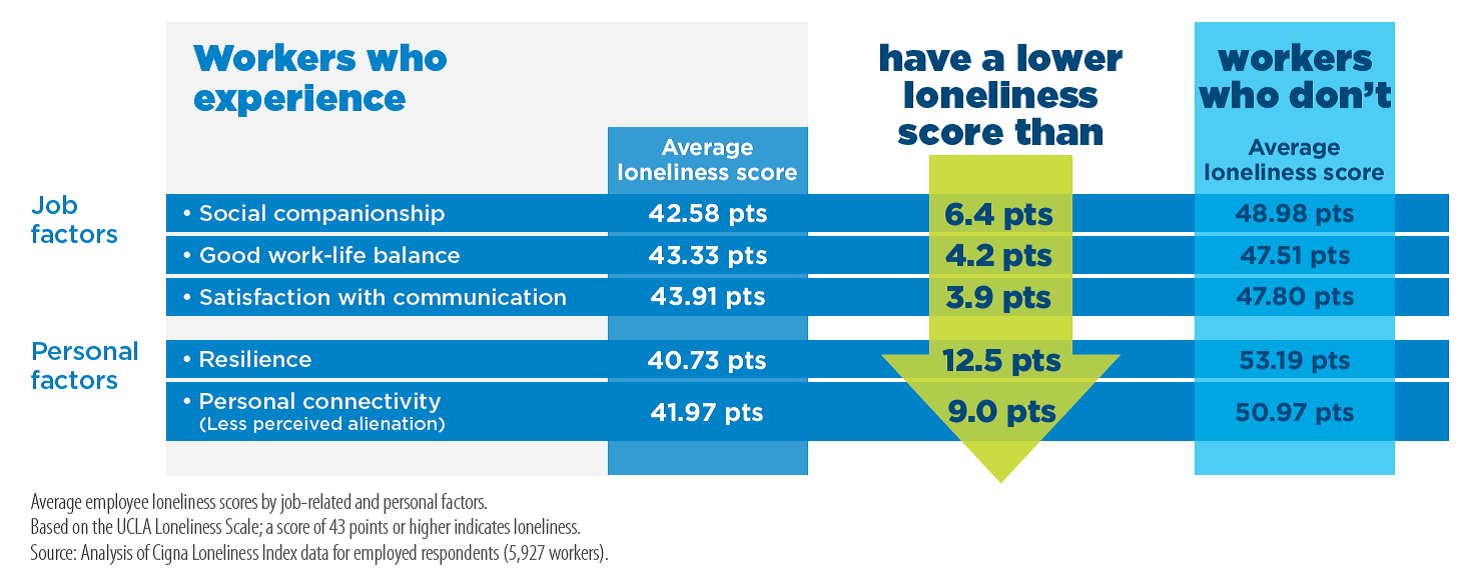Even before the COVID-19 pandemic, three in five adults reported feelings of loneliness. These feelings, as well as stress, anxiety and depression, have intensified as the pandemic lingers.

Even before the COVID-19 pandemic, three in five adults reported feelings of loneliness. These feelings, as well as stress, anxiety and depression, have intensified as the pandemic lingers. They reverberate throughout daily life, impacting the desire and the ability of people to engage at home and at work.
Unsurprisingly, the impact to business performance and employers’ bottom line is significant, with costs to employers estimated at more than $154 billion annually in stress-related absenteeism alone. That’s a key finding of Cigna's Loneliness Index data, published in the Journal of Organizational Effectiveness: People and Performance, which provides a deeper look at the costs of loneliness as well as opportunities for employers to support people, now and in the future. The study is based on an Ipsos survey, commissioned by Cigna, of nearly 6,000 employees across the United States conducted from July 16 to August 2, 2019. The survey measured workers’ feelings of loneliness and social isolation using the UCLA Loneliness Scale, a 20-item questionnaire that indicates loneliness with a score of 43 or higher.
The Impact of Loneliness on Workforce Productivity
Lonely employees demonstrate higher rates of avoidable (stress-related) absenteeism, missing more than five additional work days per year than those who do not identify as lonely. They also express a greater intention to quit their job within the next 12 months, nearly twice as likely as other workers.
Five Factors That Can Help Mitigate Feelings of Loneliness Among Workers
The study identifies key job and personal factors than can help decrease the sense of loneliness, and support employee engagement and emotional well-being. Social companionship, good work-life balance, and satisfaction with communication at work, as well as strong personal resilience and sense of connectivity and inclusion, can help mitigate loneliness by promoting employee engagement and psychosocial health.
Job-related factors:
- Social companionship: ability to meet new people and make friends at work; relating to and socializing with colleagues.
- Work-life balance: being able to leave work at work, without it spilling over into personal life.
- Satisfaction with communication at work: including conversations and meetings (in-person, phone, and video conference), email and chat messages, and business-related social media posts.
Personal factors:
- Resilience: feeling respected in the workplace; having colleagues that support emotional security and well-being.
- Personal connectivity: being able to share personal thoughts and concerns with colleagues; feeling free to be their true self at work.
"Our study highlights the critical points of focus to address loneliness in the workplace in order to enhance employee engagement and reduce job withdrawal,” said Anne Bowers, Ph.D., study author and senior health services researcher for behavioral health at Evernorth.
The study demonstrated that people who experience these factors at work were up to 53% less likely to be lonely than other employees in some cases.
“Employers can play a pivotal role in fostering a healthy work-life balance among employees, along with social companionship and good communication at work, in order to prevent workforce loneliness,” added Stuart Lustig, M.D., co-author of the study and national medical executive for behavioral health at Evernorth. “For example, managers at every level of an organization can initiate discussions with each of their team members about what a healthy work-life balance would feel like for them personally.”
Creating Connectivity within the Workforce
Employers have an opportunity to address workforce loneliness by helping employees build and enhance meaningful workplace connections, greater resilience, and improved emotional well-being. For example, flexible working schedules and “email blackout periods” (e.g., from 8 p.m. to 8 a.m.) can help promote better work-life balance. Employers can also strengthen connectivity among remote and hybrid workers through regular check-ins and virtual team-building activities. They can also sponsor virtual social activities that encourage employees to strengthen coworker relationships and promote a culture of belonging.
Employers can further build a sense of workforce belonging by encouraging a more inclusive workplace. A simple, scalable approach to start is having every team leader include every teammate in group projects, and treat them all fairly. Organizations can also encourage the formation of employee resource groups (ERGs), in which members share a common characteristic, including gender, ethnicity or a religious affiliation, or are allied with the group’s interest or cause. ERGs can provide a forum for networking and career development, as well as empower individual employees to share their thoughts, concerns, and ideas with the organization to further business innovation. These strategies can help employees feel more connected to their colleagues and more comfortable to bring their true selves to work, which can help increase their commitment to their job.
By promoting practices that help alleviate loneliness and build a stronger sense of community, employers can support the social and emotional health of employees, which leads to greater workforce engagement, employee retention and business performance.
Click here to read the full analysis of Cigna Loneliness Index data.

When We Work Together to Combat Loneliness, Everyone Wins
Cigna is taking a comprehensive approach to help address feelings of loneliness and improve mental well-being.




